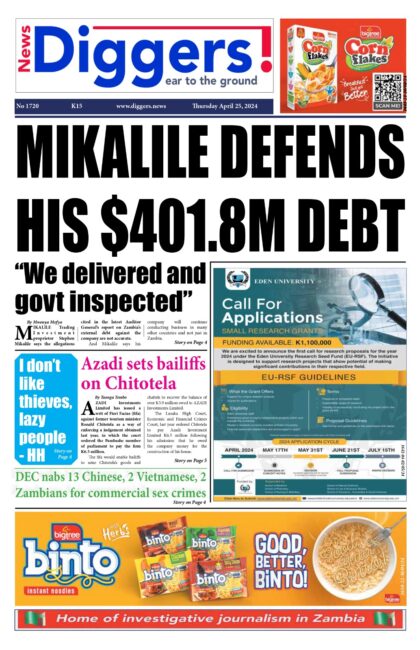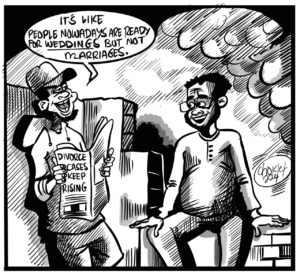The kwacha’s depreciation where it hit K13 per dollar is partly due to lapses in the current Balance of Payment (BoP) monitoring mechanism system, the Economics Association of Zambia (EAZ) has observed.
And the EAZ have urged government to consider implementing “light forms” of foreign exchange controls as a means of preserving the sovereign value of the under-pressure kwacha.
Last Friday, the kwacha hit the K13 per dollar psychological barrier for the first time since November, 2015, losing value from a position where it traded at around K12.41 by April 12.
The local unit was seen trading at a market average of K12.85 and K12.90 by lunchtime, Tuesday, for bid and offer respectively, according to the Bank of Zambia, compared to trading at K12.41 and K12.46 just two weeks ago.
Commenting on the depreciation, EAZ national secretary Mutisunge Zulu observed that government needed to relook at the current Balance of Payment (BoP) monitoring mechanism to arrest lapses and stem huge revenue leakages incurred through unmonitored transactions.
“In light of the recent currency weakening trajectory, which has seen the kwacha slide to levels of K13 representing an 8.6 per cent depreciation YTD, the EAZ wishes to advise the Zambian authorities to relook the balance of payment monitoring mechanism. The Association has observed that timely and accurate BOP data is vital to inform and advise authorities accordingly. The Association has observed lapses in the current monitoring system and noted the risk of unaccounted for flows, i.e. one-legged foreign transactions or mismatches, which may negatively impact the foreign exchange flows and accurate taxation capture,” Zulu stated in a statement, Tuesday.
“Further, BOP monitoring involves private external debt monitoring. It is important to ascertain foreign exchange outflows and the stock and structure of private external debt. Balance of Payments (BOP) position is currently under pressure because the current monitoring mechanism is lagged and based on the goods side of the economy, without balancing this with the money side of the economy. This is not sustainable and not thorough enough to account for foreign exchange flows. The Association is of the view that the authorities should implement electronic forms of BOP monitoring, which should strive to reconcile with transactions that the revenue authority sees in the market.”
He also stated that an enhanced BOP monitoring mechanism would help stem the continued mismatch in supply of foreign exchange between commercial banks and the Zambia Revenue Authority (ZRA).
“It is about a dry point of construction that there exists many leakages in the economy, and as such, the Association believes that automation does help to curb the information mismatches/asymmetries between the banks and the revenue authority,” he stated.
And Zulu urged government to consider implementing “light forms” of foreign exchange controls as a means of preserving the sovereign value of the under-pressure kwacha.
He complained that by allowing for price quotes in foreign currency in Zambia’s free market economy had cost the kwacha its sovereign value.
“Most neighbouring jurisdictions will not allow for entrants to use any currency, but the local currency. This has helped preserve the value of the local units. The Association acknowledges that light forms of exchange controls have been misunderstood by many as stifling flows into a liberalised framework. However, the EAZ cites most jurisdictions that have some form of restrictions to preserve value and confidence in local currencies,” argued Zulu.
“The Association also echoes the need for the authorities to revisit the Statutory Instrument No. 55 attempted a few years back, which was hastily implemented. Further, the de-dollarization regulation is a tool, which the Association believes was introduced with good intentions. Allowing for price quotes in foreign currency in the name of the free market economy has cost the kwacha its sovereign value.”












